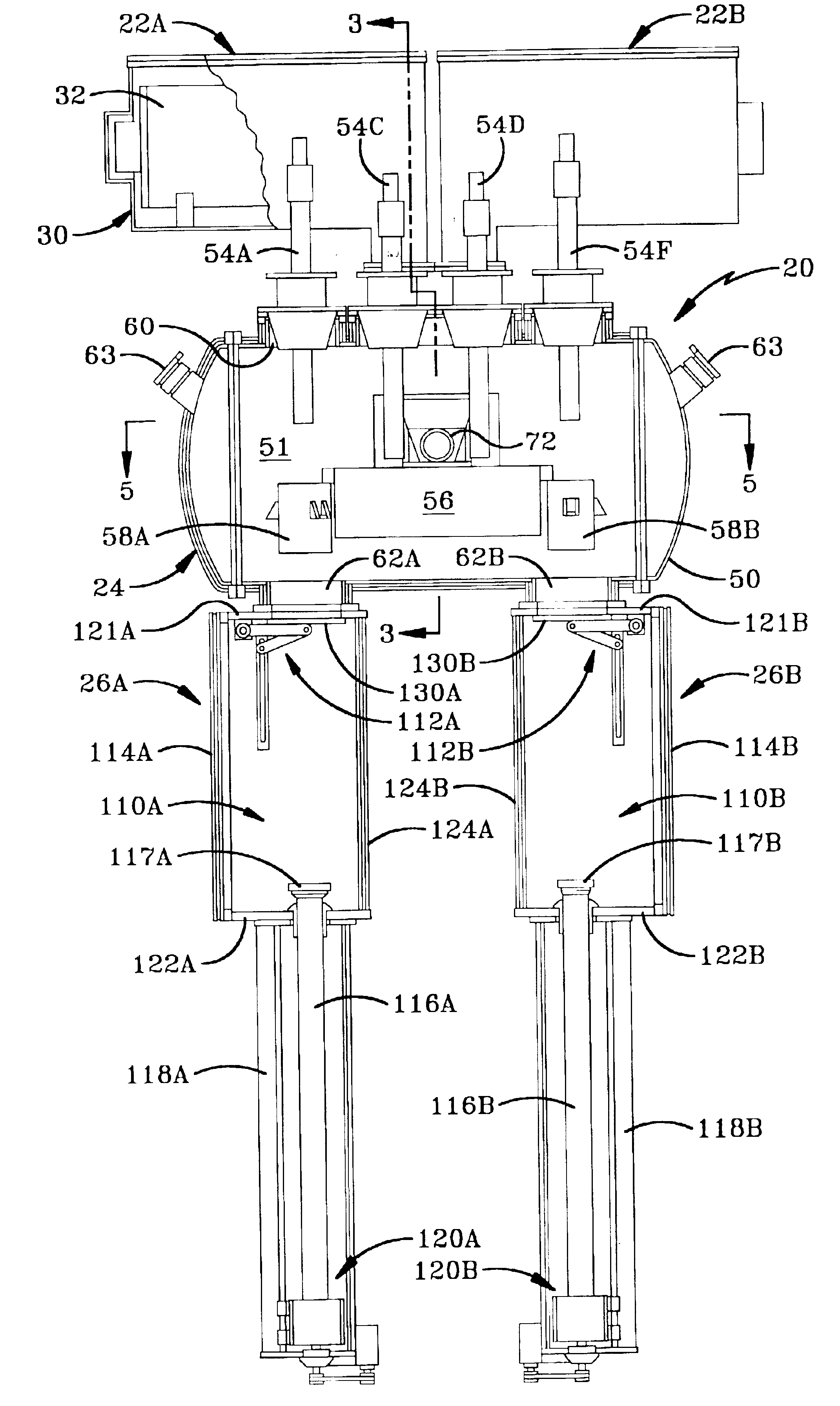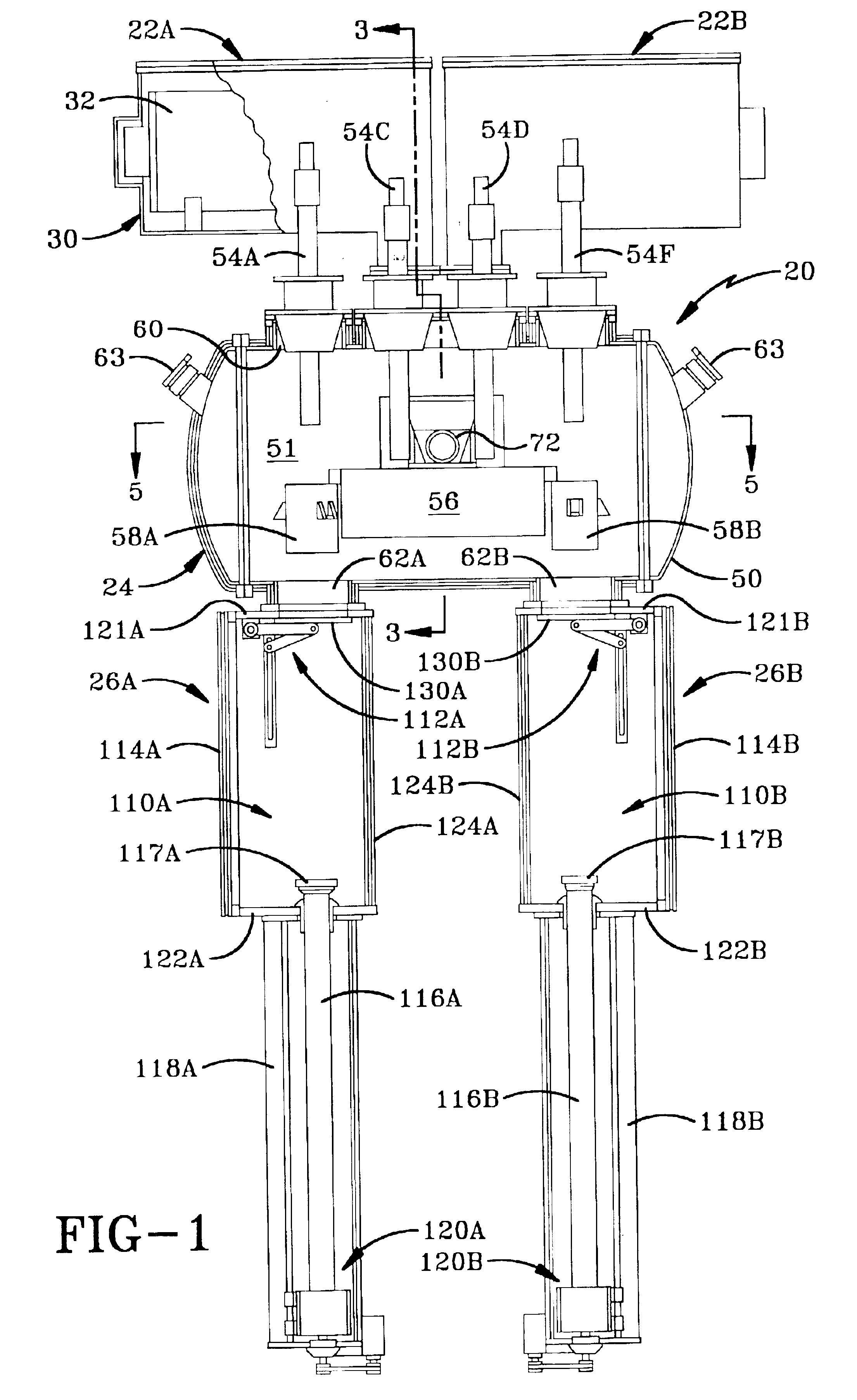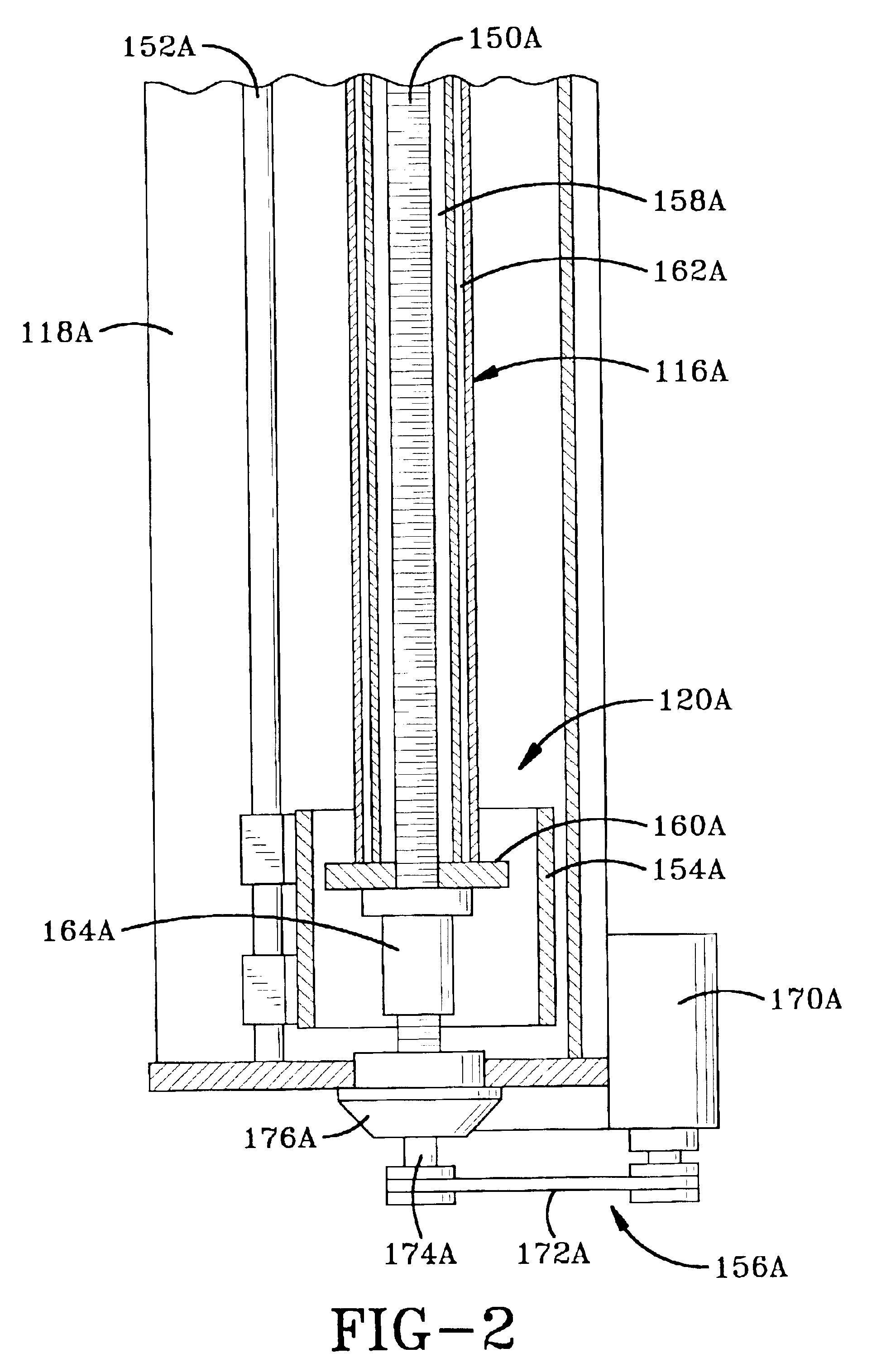Method and apparatus for alternating pouring from common hearth in plasma furnace
- Summary
- Abstract
- Description
- Claims
- Application Information
AI Technical Summary
Problems solved by technology
Method used
Image
Examples
Embodiment Construction
[0040]The improved cold hearth melting system of the present invention is shown in three embodiments in the Figures although other embodiments are contemplated as is apparent from the alternative design discussions herein and to one of skill in the art. Specifically, the first embodiment of the cold hearth melting system is indicated generally at 20 as shown in FIGS. 1-14. This cold hearth melting system 20 includes one or more feeders 22, a furnace 24, and one or more lift systems 26. In the version of the first embodiment shown in FIG. 1, the system 20 includes a pair of feeders 22A and 22B feeding metal (such as titanium, stainless steel, nickel, tungsten, molybdenum, niobium, zirconium, tantalum and other metals or alloys thereof) into furnace 24 which processes the materials into ingots that are removed from the furnace by a pair of lift systems 26A and 26B. In the description below, only feeder 22A and lift system 26A are described in detail as to construction since the other ...
PUM
| Property | Measurement | Unit |
|---|---|---|
| Melting point | aaaaa | aaaaa |
| Content | aaaaa | aaaaa |
Abstract
Description
Claims
Application Information
 Login to View More
Login to View More - R&D Engineer
- R&D Manager
- IP Professional
- Industry Leading Data Capabilities
- Powerful AI technology
- Patent DNA Extraction
Browse by: Latest US Patents, China's latest patents, Technical Efficacy Thesaurus, Application Domain, Technology Topic, Popular Technical Reports.
© 2024 PatSnap. All rights reserved.Legal|Privacy policy|Modern Slavery Act Transparency Statement|Sitemap|About US| Contact US: help@patsnap.com










